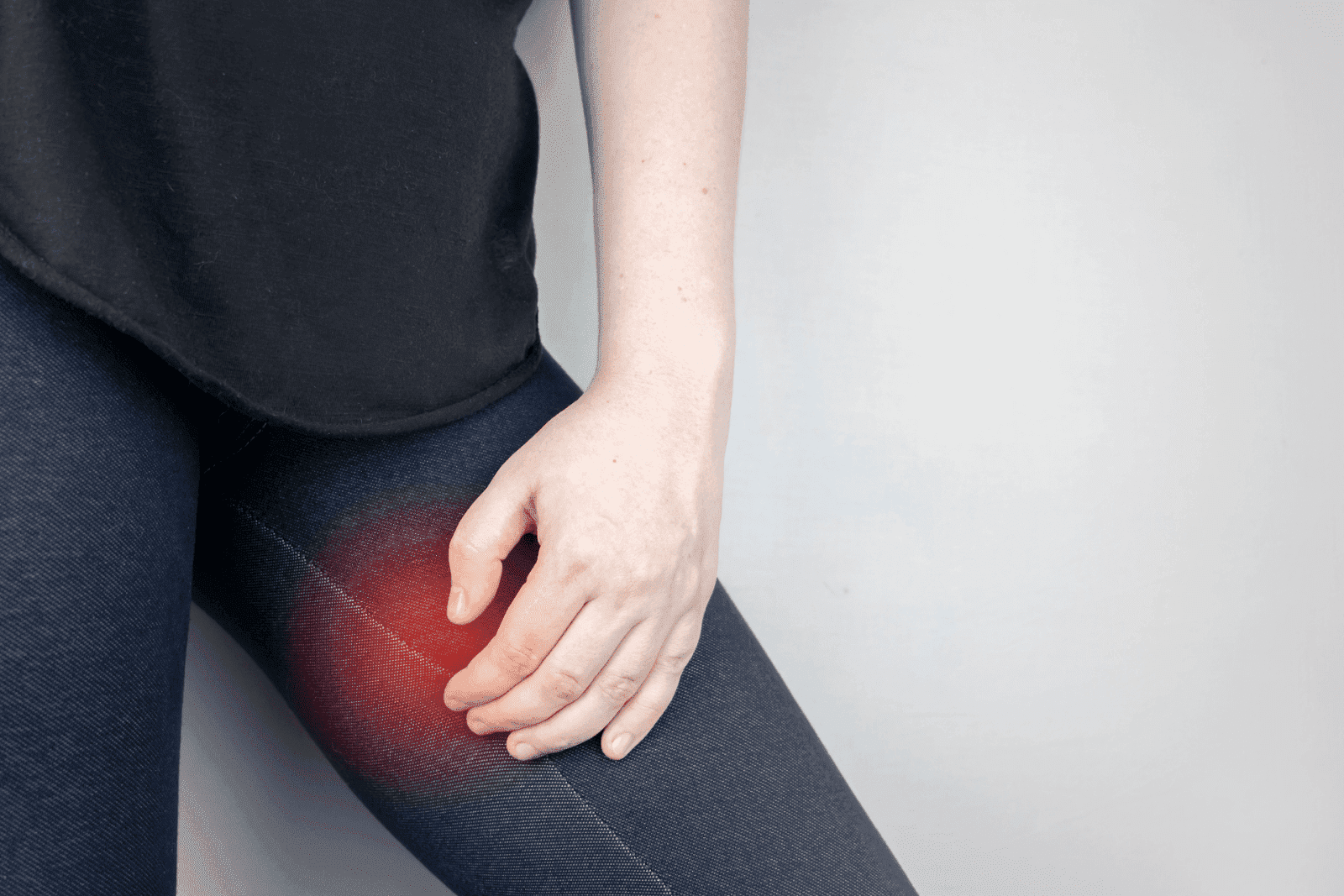Why Does My Inner Thigh Hurt?
Experiencing pain in the inner thigh can be unsettling and sometimes confusing. This type of discomfort can arise from a variety of causes, ranging from minor muscle strain [...]
Read More
Medically reviewed by Abhijit Bhattacharyya | MD, PhD, MBA, Tufts University School of Medicine - Miami, Florida on October 16th, 2025.
Experiencing pain in the inner thigh can be unsettling and sometimes confusing. This type of discomfort can arise from a variety of causes, ranging from minor muscle strain to more serious medical conditions. Understanding the potential reasons behind inner thigh pain is essential for effective treatment and relief. This article explores common causes, symptoms, and when to seek medical advice, helping you navigate this issue with confidence.
 Common Causes of Inner Thigh Pain
Common Causes of Inner Thigh PainOne of the most frequent causes of inner thigh pain is muscle strain. The inner thigh is home to the adductor muscles, which help bring your legs together and stabilize your hips. Overstretching or overusing these muscles during activities such as running, cycling, or sudden movements can lead to strains or tears.
Muscle strains typically cause sharp pain, tenderness, and sometimes swelling. Athletes and active individuals are particularly prone to this type of injury. Rest, ice, compression, and elevation (RICE) are often effective initial treatments. Additionally, incorporating strength training and flexibility exercises into your routine can help prevent future strains by enhancing the resilience of the adductor muscles. Stretching before and after workouts is crucial, as it prepares the muscles for activity and aids in recovery afterward.
Groin injuries, which affect the area where the inner thigh meets the pelvis, are another common source of pain. These injuries may involve the muscles, tendons, or ligaments and can result from sports, heavy lifting, or sudden directional changes.
Symptoms often include pain when moving the leg, stiffness, and difficulty walking. In some cases, bruising or swelling may be visible. Proper diagnosis and treatment are important to avoid chronic issues. Rehabilitation exercises focusing on gradual strength building and flexibility can be beneficial in recovery. Furthermore, understanding the mechanics of your movements during sports or physical activities can help identify risk factors and minimize the chances of re-injury.
Nerves running through the pelvis and thigh can become compressed or irritated, leading to pain that radiates into the inner thigh. Conditions such as meralgia paresthetica or lumbar radiculopathy may cause numbness, tingling, or burning sensations alongside pain.
These nerve-related issues often require medical evaluation to determine the underlying cause and appropriate treatment, which may include physical therapy or medication. In some cases, lifestyle modifications such as ergonomic adjustments at work or changes in exercise routines can alleviate pressure on the affected nerves. Additionally, maintaining a healthy weight can reduce strain on the pelvis and lower back, potentially decreasing the likelihood of nerve compression. Understanding the interplay between nerve health and physical activity can empower individuals to take proactive steps in their overall wellness journey.
Deep vein thrombosis is a blood clot that forms in a deep vein, often in the legs. While it might not always cause pain, when it does, the discomfort can be felt in the inner thigh. DVT is a medical emergency because clots can travel to the lungs, causing a pulmonary embolism. Risk factors for developing DVT include prolonged immobility, such as long flights or bed rest after surgery, as well as certain medical conditions like cancer or heart disease. Understanding these risk factors can help individuals take preventive measures, such as engaging in regular physical activity and staying hydrated.
If inner thigh pain is accompanied by swelling, redness, warmth, or sudden shortness of breath, seek immediate medical attention. Treatment for DVT often involves anticoagulant medications to prevent the clot from growing and to reduce the risk of complications. In some cases, more invasive procedures may be necessary to remove the clot, emphasizing the importance of recognizing symptoms early.
Issues with the hip joint, such as arthritis or labral tears, can cause referred pain to the inner thigh. This pain might worsen with activity or prolonged sitting. Hip problems often develop gradually and may be accompanied by stiffness or a limited range of motion. In addition to pain in the inner thigh, individuals may also experience discomfort in the groin or buttock area, which can complicate diagnosis and treatment. Activities that involve twisting or pivoting motions, such as sports or certain exercises, can exacerbate these conditions, leading to further discomfort.
Early diagnosis and management can improve quality of life and prevent further joint damage. Treatment options may include physical therapy to strengthen the surrounding muscles, corticosteroid injections to reduce inflammation, or even surgical interventions in more severe cases. Patients are encouraged to consult healthcare professionals for personalized treatment plans that cater to their specific needs and activity levels.
Infections like cellulitis or abscesses in the thigh area can cause localized pain, swelling, and redness. Inflammatory conditions such as bursitis or tendinitis may also affect the inner thigh, leading to discomfort and impaired movement. These infections can arise from various sources, including skin injuries or surgical wounds, and may present with fever or chills, indicating a systemic response to infection. Prompt identification and treatment are crucial, as untreated infections can lead to more severe complications, including sepsis.
These conditions require prompt medical evaluation to initiate appropriate treatment, including antibiotics or anti-inflammatory medications. In some cases, drainage of an abscess may be necessary to alleviate pressure and promote healing. Additionally, lifestyle modifications, such as avoiding activities that exacerbate inflammation, can be beneficial in managing symptoms and preventing recurrence. Regular follow-ups with healthcare providers can ensure that any underlying issues are addressed effectively, paving the way for a smoother recovery process.
Determining when to consult a healthcare professional is crucial for inner thigh pain. Mild muscle strains often improve with self-care, but persistent or severe pain warrants medical attention. Immediate care is necessary if pain is accompanied by swelling, redness, fever, numbness, or difficulty walking.
For a convenient and reliable medical consultation, consider using telehealth services such as Doctronic.ai. Doctronic offers 24/7 access to board-certified doctors through video visits across all 50 states, providing expert advice without leaving your home. This service is especially beneficial for quick assessments and guidance on managing your symptoms effectively.
Doctronic.ai is revolutionizing healthcare by combining artificial intelligence with telehealth to deliver fast, accurate, and personalized medical care. If you are wondering, “Why does my inner thigh hurt?” Doctronic’s AI doctor can analyze your symptoms in seconds, drawing on the latest peer-reviewed medical research to provide comprehensive answers and treatment recommendations.
Unlike traditional telehealth platforms, Doctronic’s AI remembers your medical history and personal details, offering a more tailored experience. Whether you need a second opinion, a diagnosis, or a referral to a specialist, Doctronic is a convenient and affordable option, with telehealth visits costing less than $40.
Visit Doctronic.ai today to get started and experience primary care powered by the most advanced AI technology in modern medicine.
Proper warm-up and stretching before physical activities can reduce the risk of muscle strains and groin injuries. Focus on dynamic stretches that target the adductor muscles and hips to prepare your body for movement.
Strengthening exercises for the hips, core, and thighs can improve stability and reduce strain on the inner thigh muscles. Incorporate resistance training and balance exercises into your routine for optimal support.
Whether exercising or performing daily tasks, using correct form and posture helps prevent injury. Avoid sudden, jerky movements and listen to your body’s signals to avoid overexertion.
Dehydration and fatigue can increase susceptibility to muscle cramps and injuries. Drink plenty of water and ensure adequate rest, especially after intense physical activity.
 Relief and Confidence Through the Right Care
Relief and Confidence Through the Right CareInner thigh pain can stem from a variety of causes, ranging from minor muscle strains to serious medical conditions. Recognizing the symptoms and understanding when to seek medical help is key to effective treatment and recovery. With the rise of telehealth, services like Doctronic.ai provide accessible, affordable, and expert medical care from the comfort of your home, making it easier than ever to get answers and support for your health concerns.
If you experience persistent or severe inner thigh pain, don’t hesitate to reach out to a healthcare professional. Utilizing advanced tools like Doctronic.ai ensures you receive the most modern, personalized care available, helping you get back to feeling your best quickly and safely.
Don't let inner thigh pain slow you down. With Doctronic, you can receive immediate, AI-powered medical insights into your condition. Our AI doctor is designed to provide you with fast, personalized, and smart healthcare solutions based on the latest peer-reviewed research. Say goodbye to waiting rooms and hello to quality care in seconds. For a more in-depth consultation, our telehealth video visits connect you with our doctors anytime, anywhere. Over 10 million people have trusted Doctronic for their healthcare needs. Skip the line. Talk to an AI Doctor Now, for free.
Experiencing pain in the inner thigh can be unsettling and sometimes confusing. This type of discomfort can arise from a variety of causes, ranging from minor muscle strain [...]
Read More